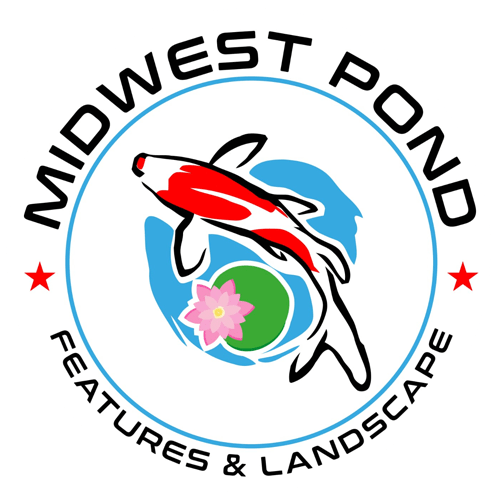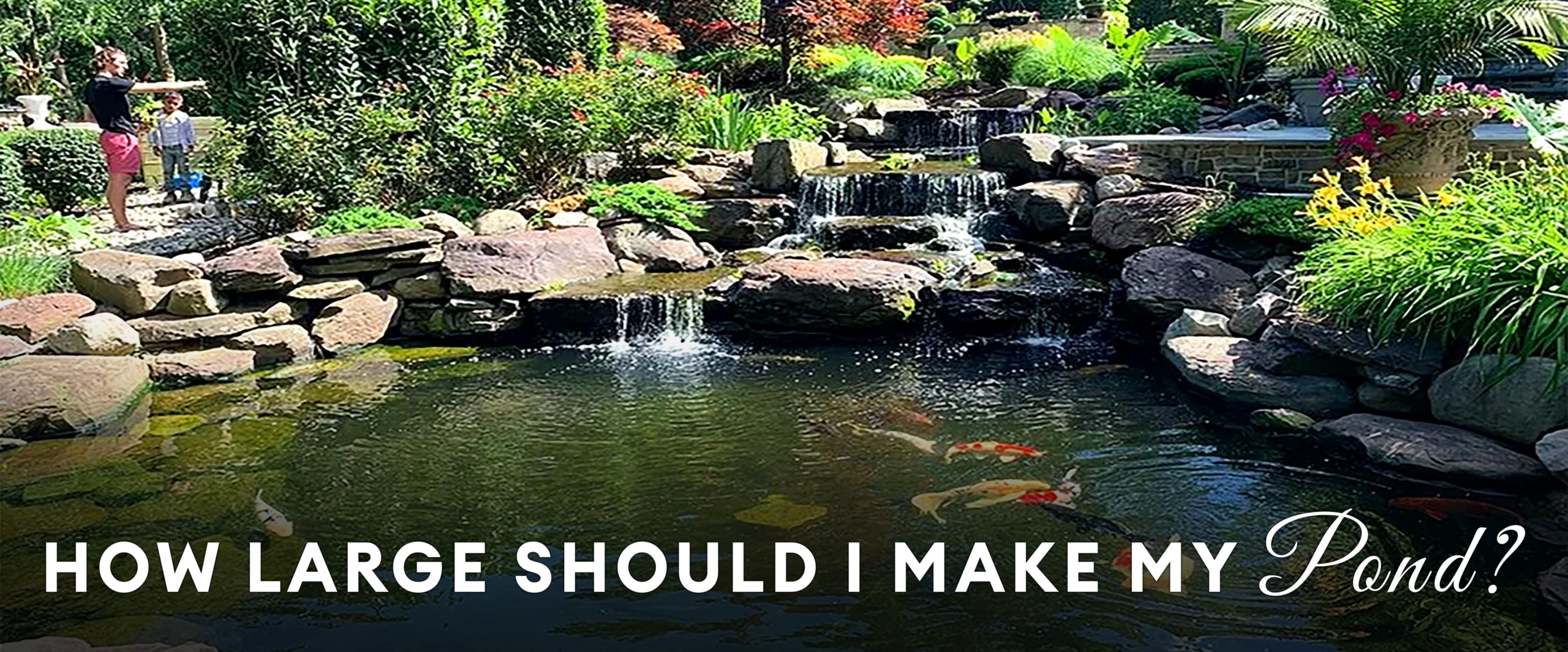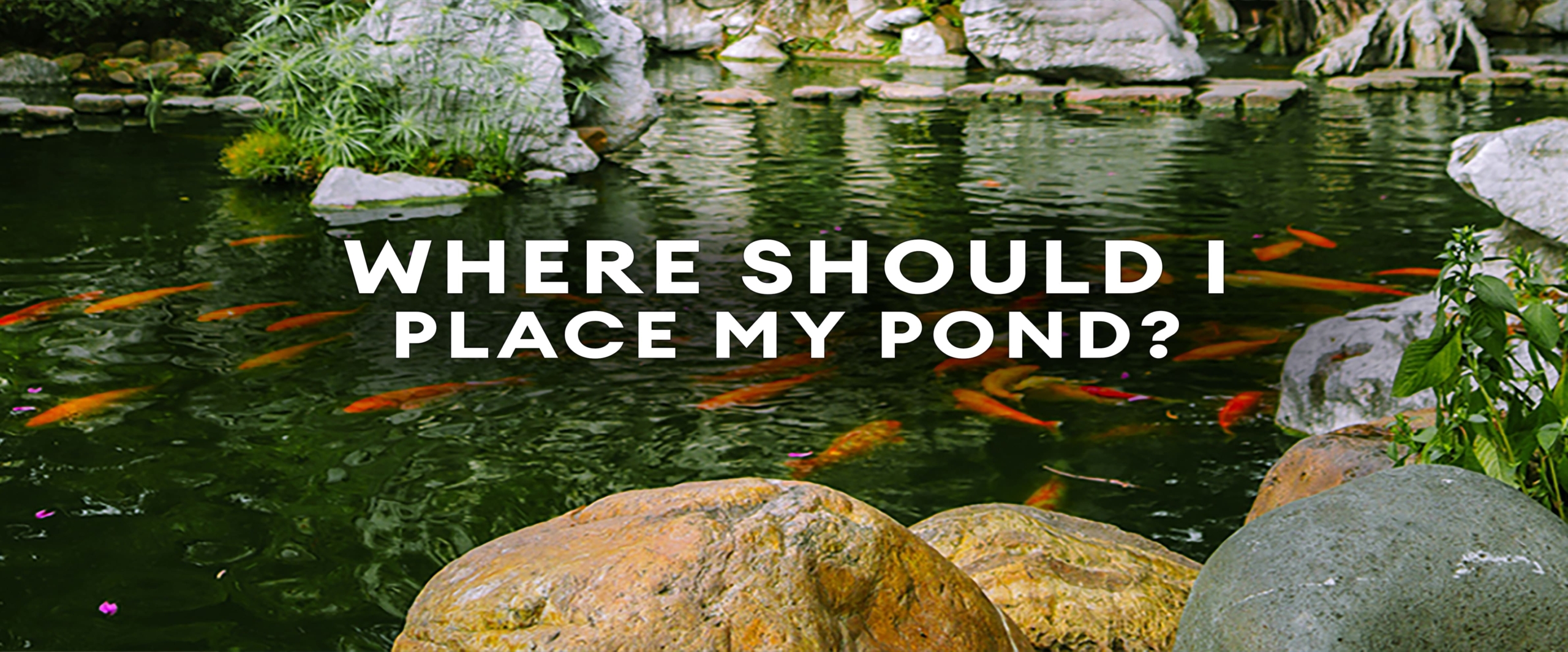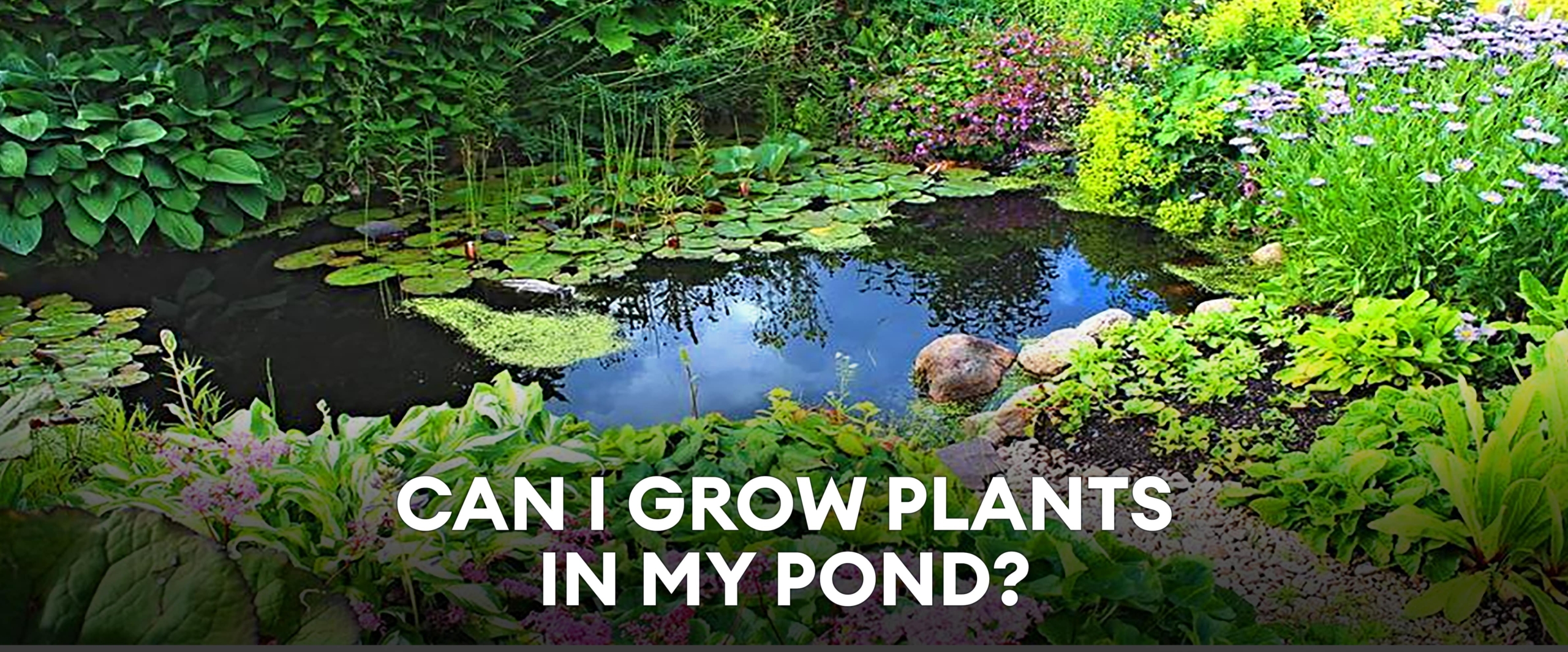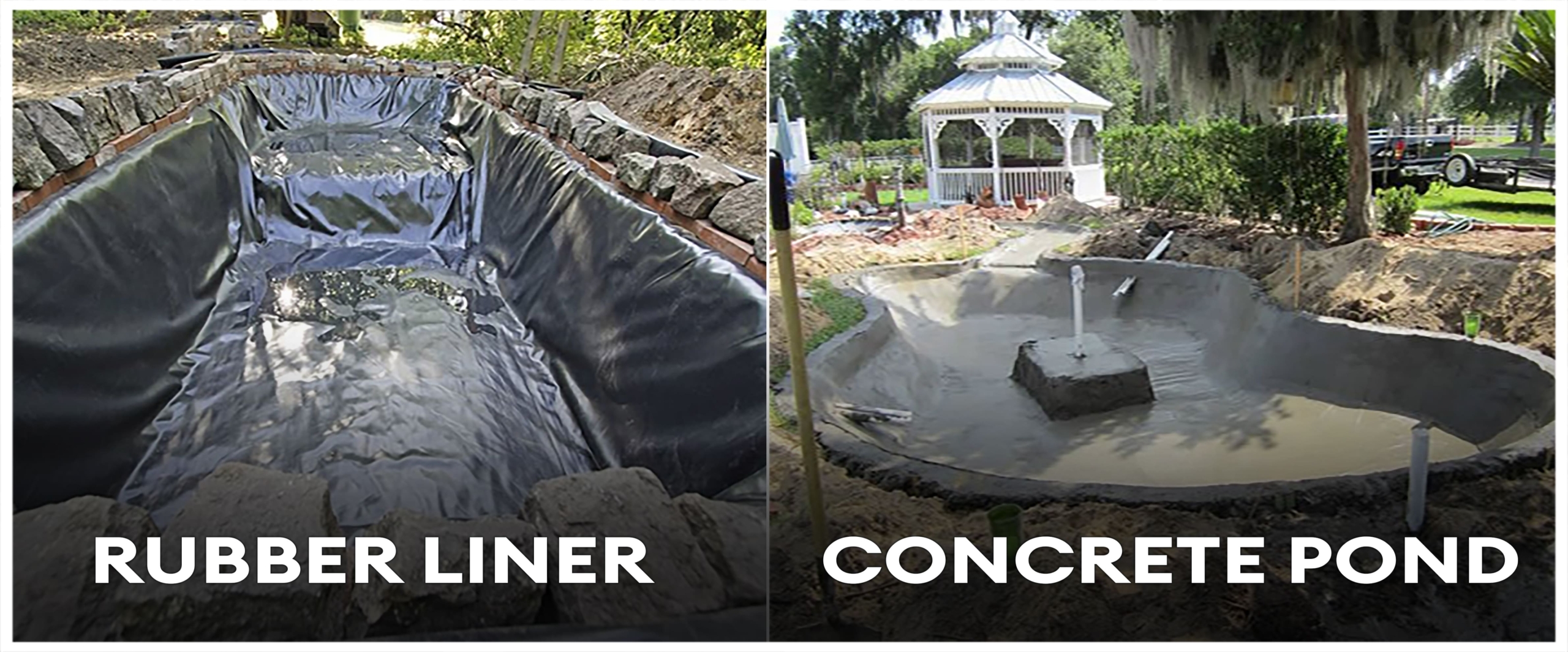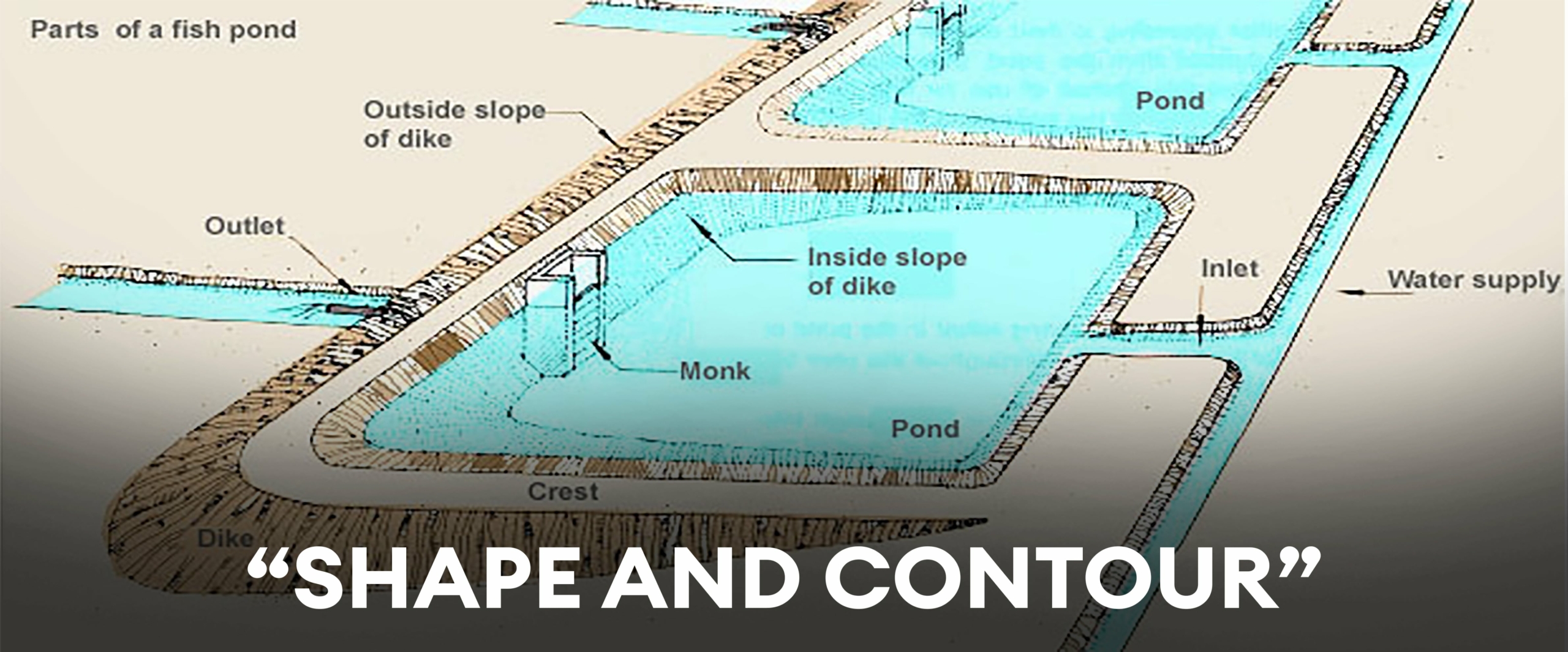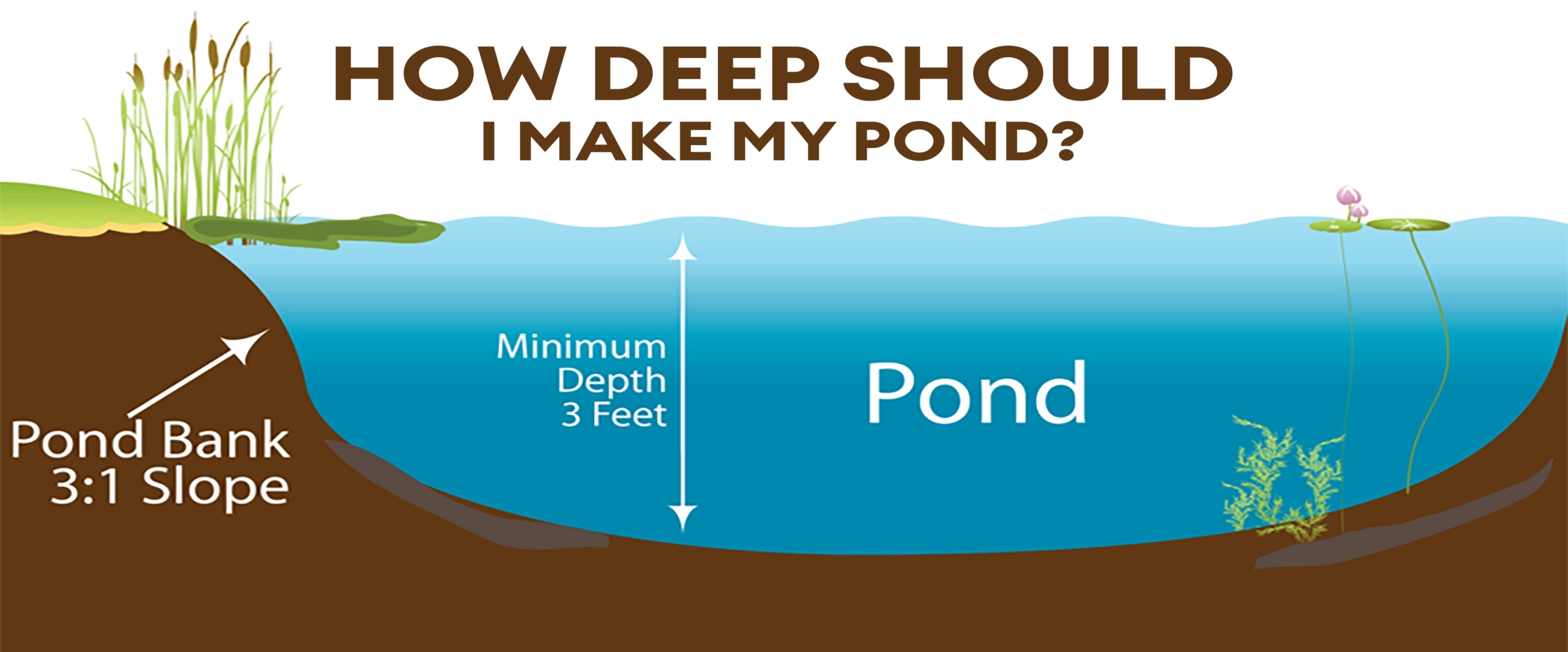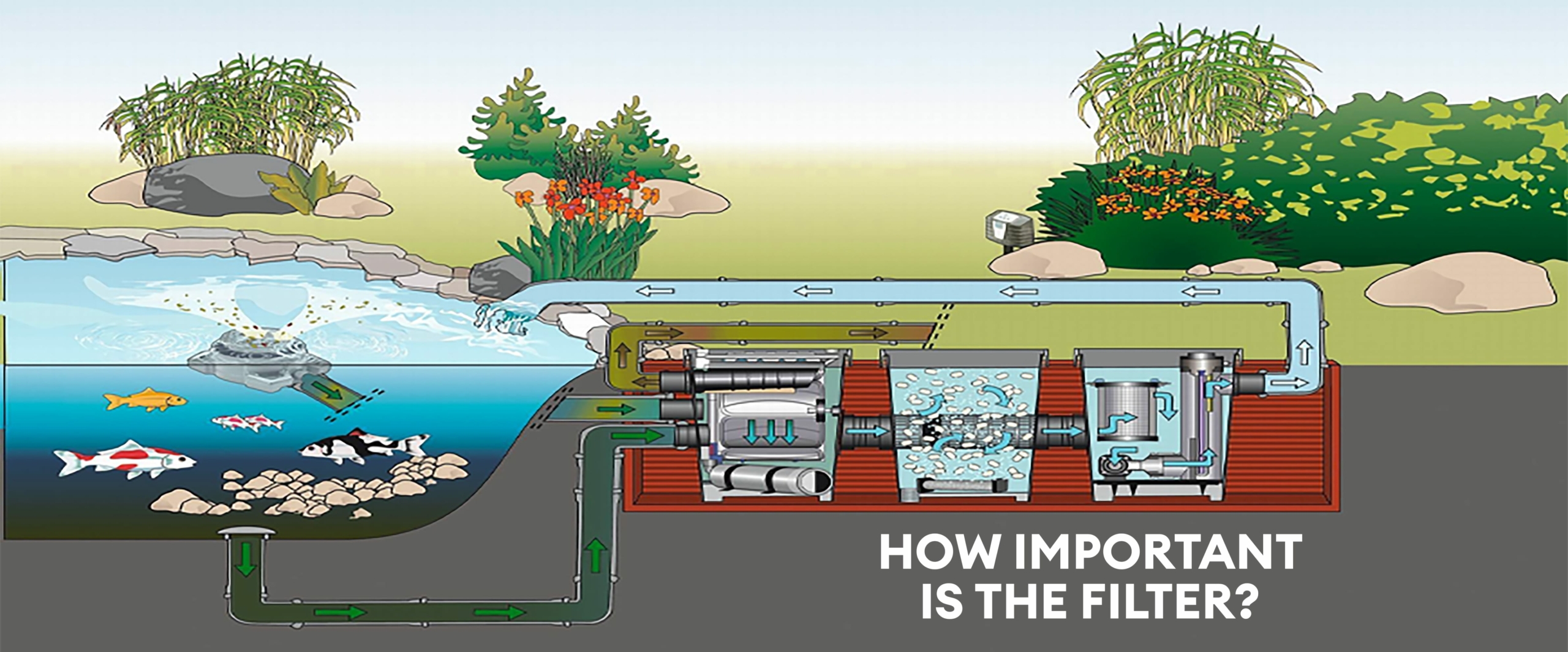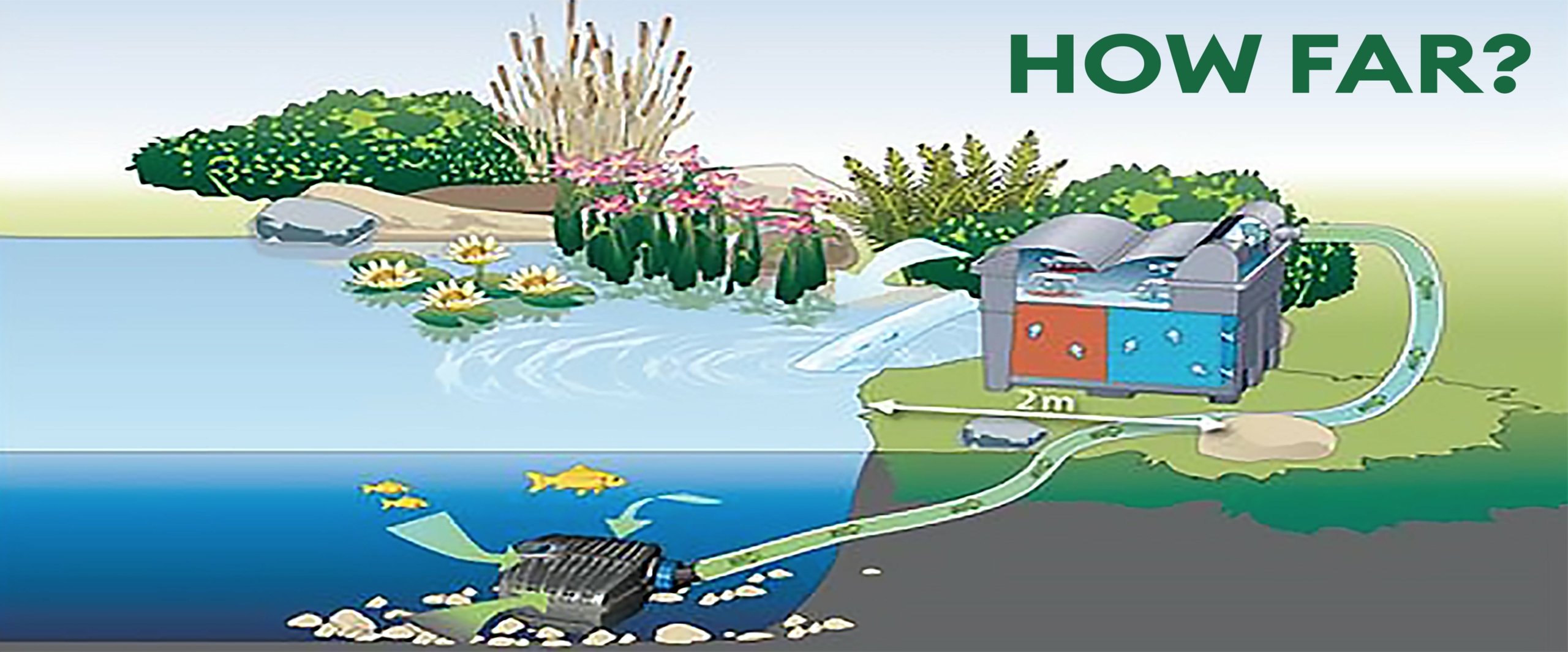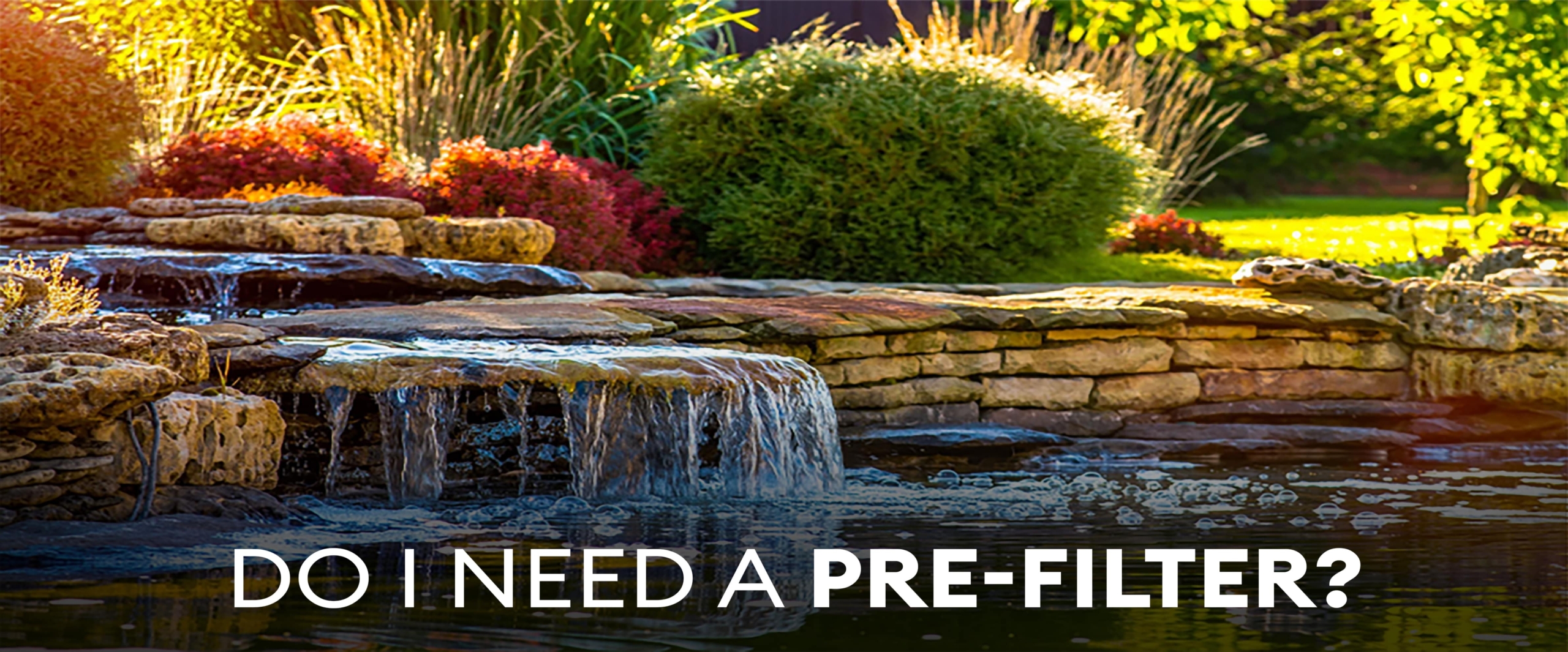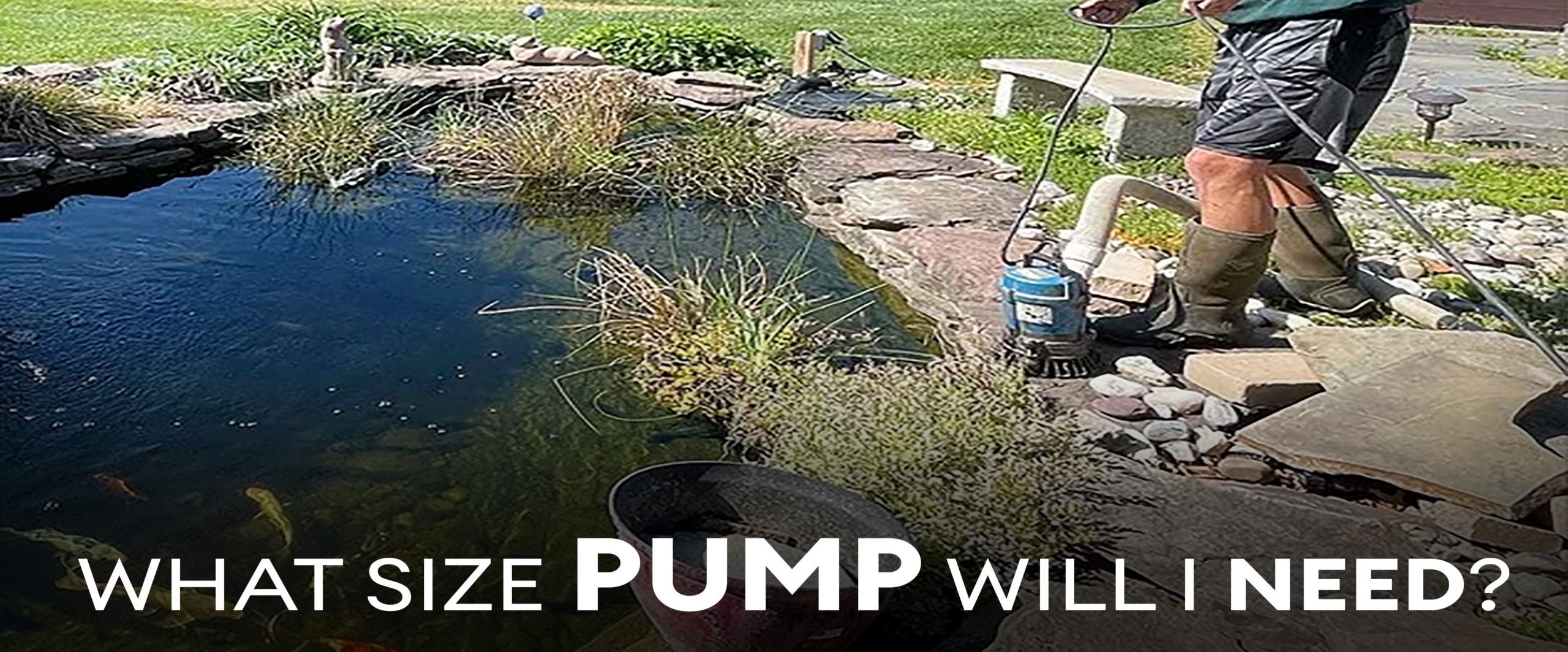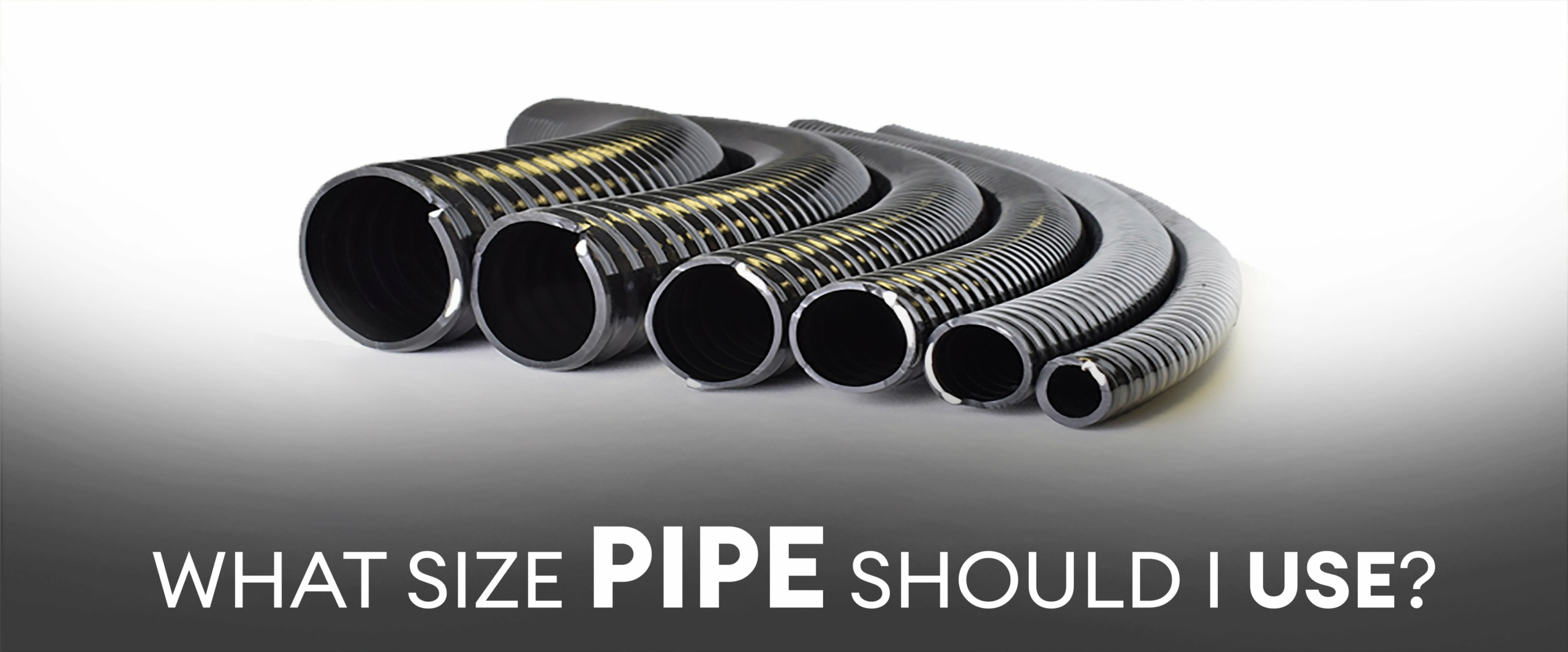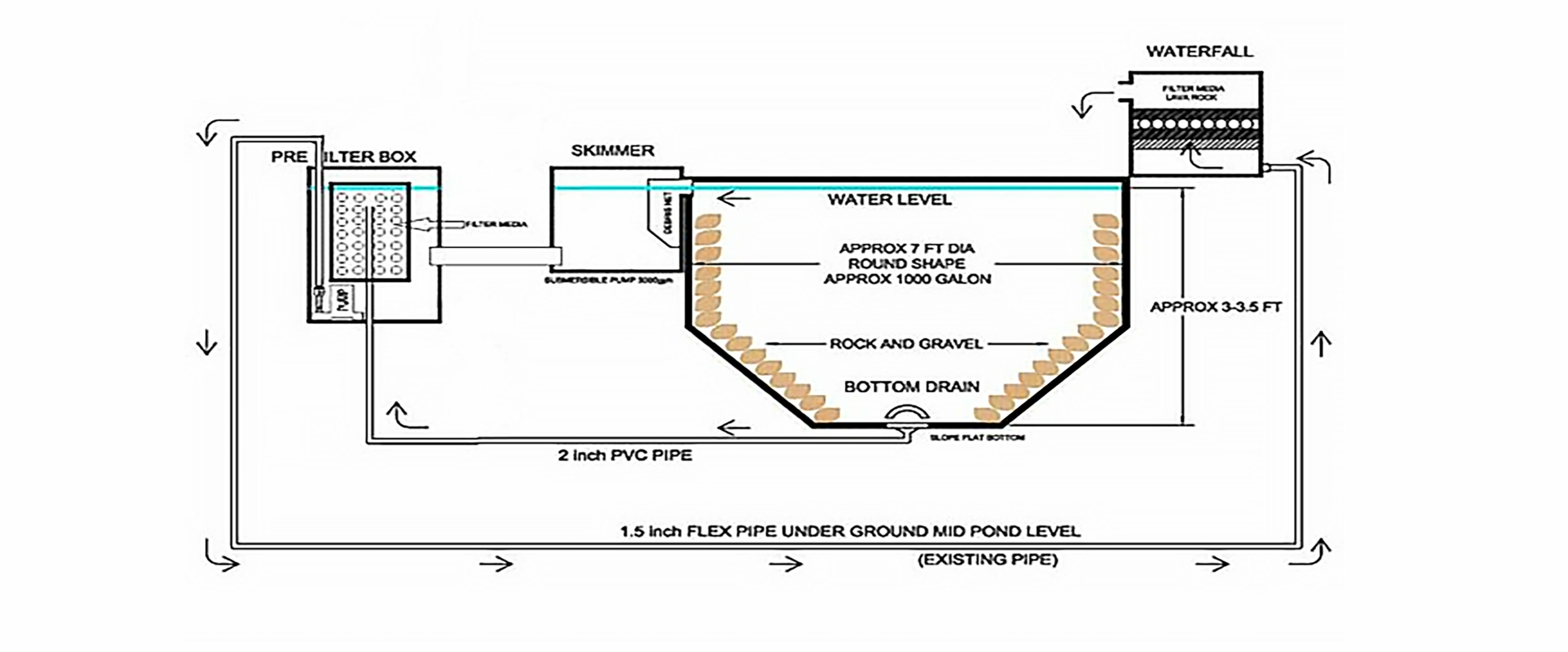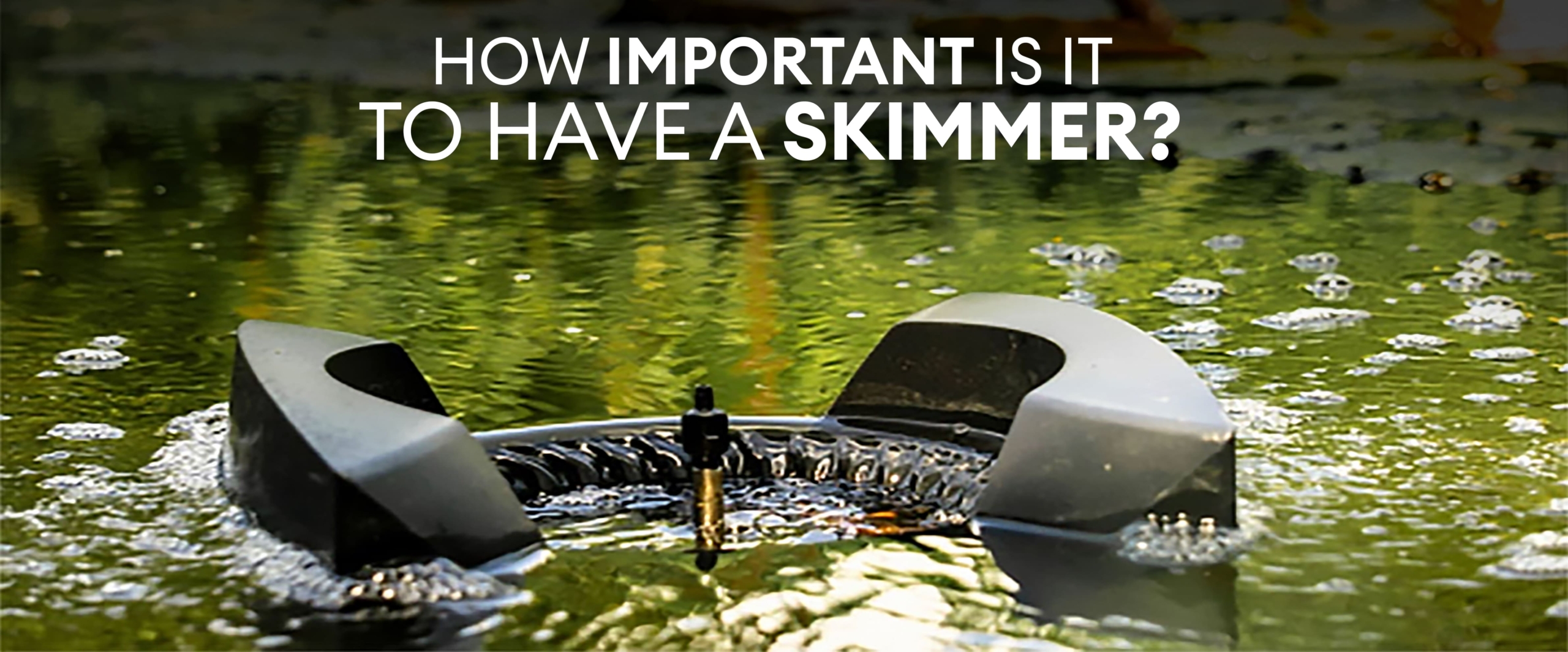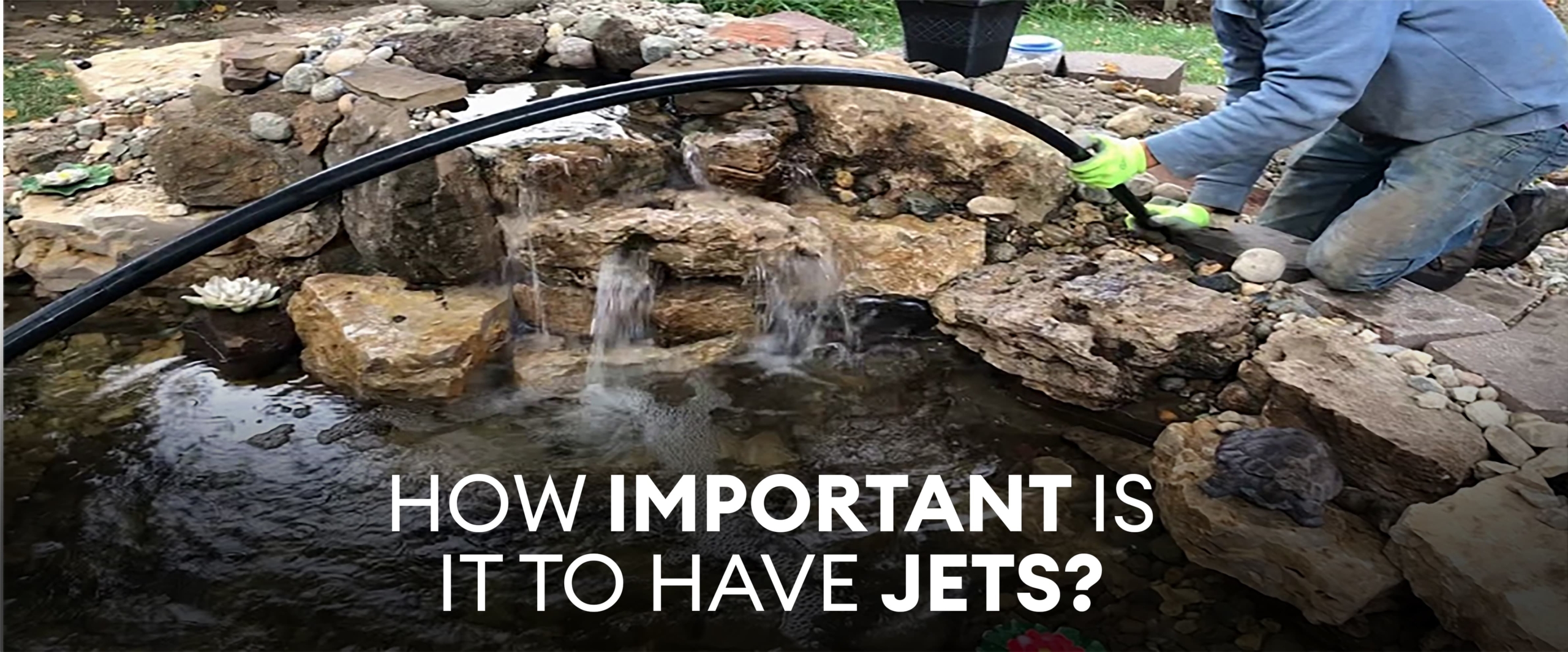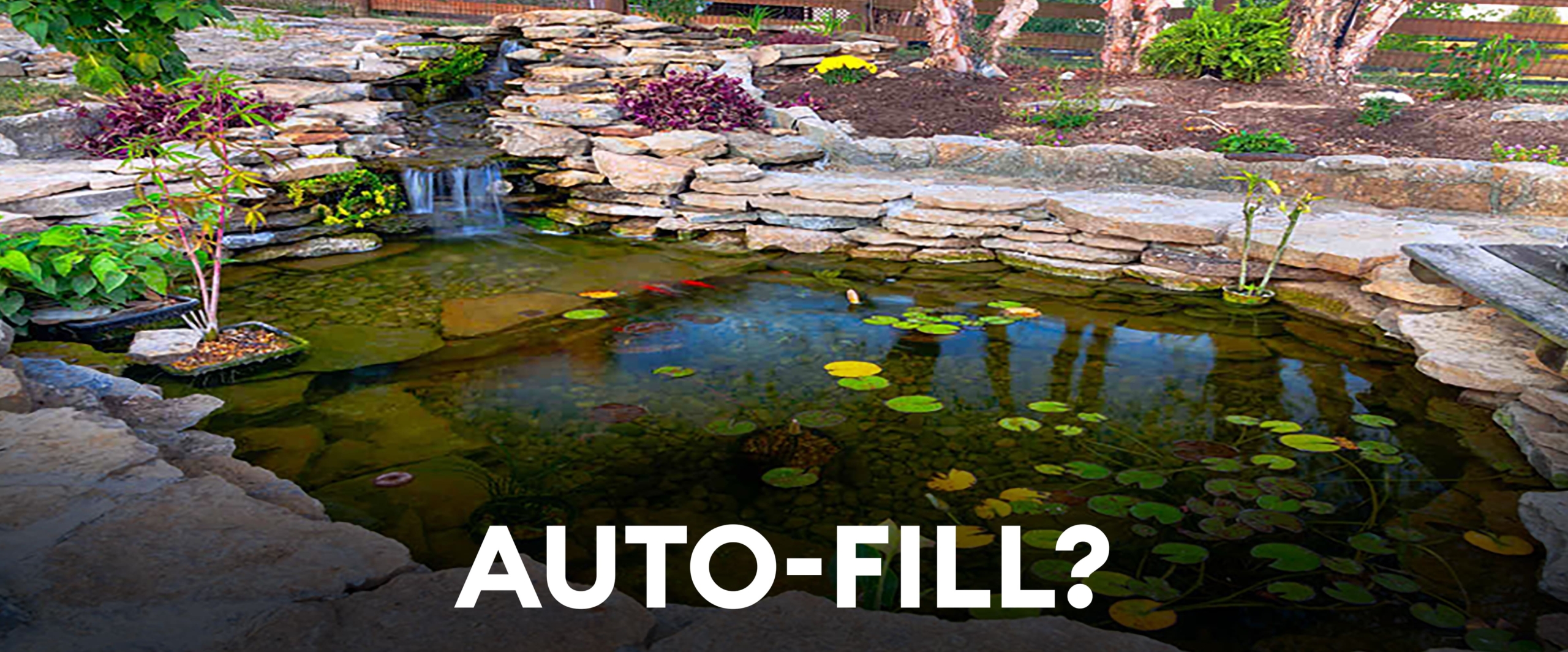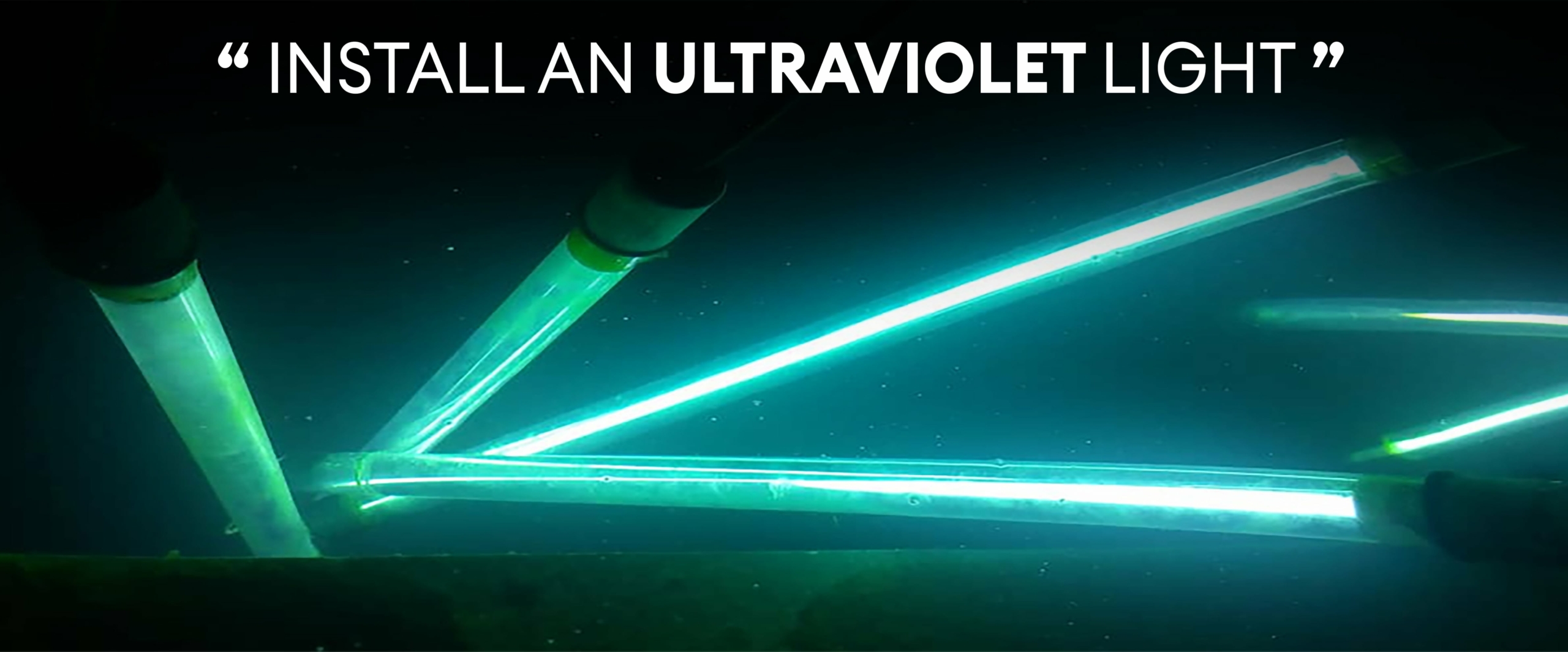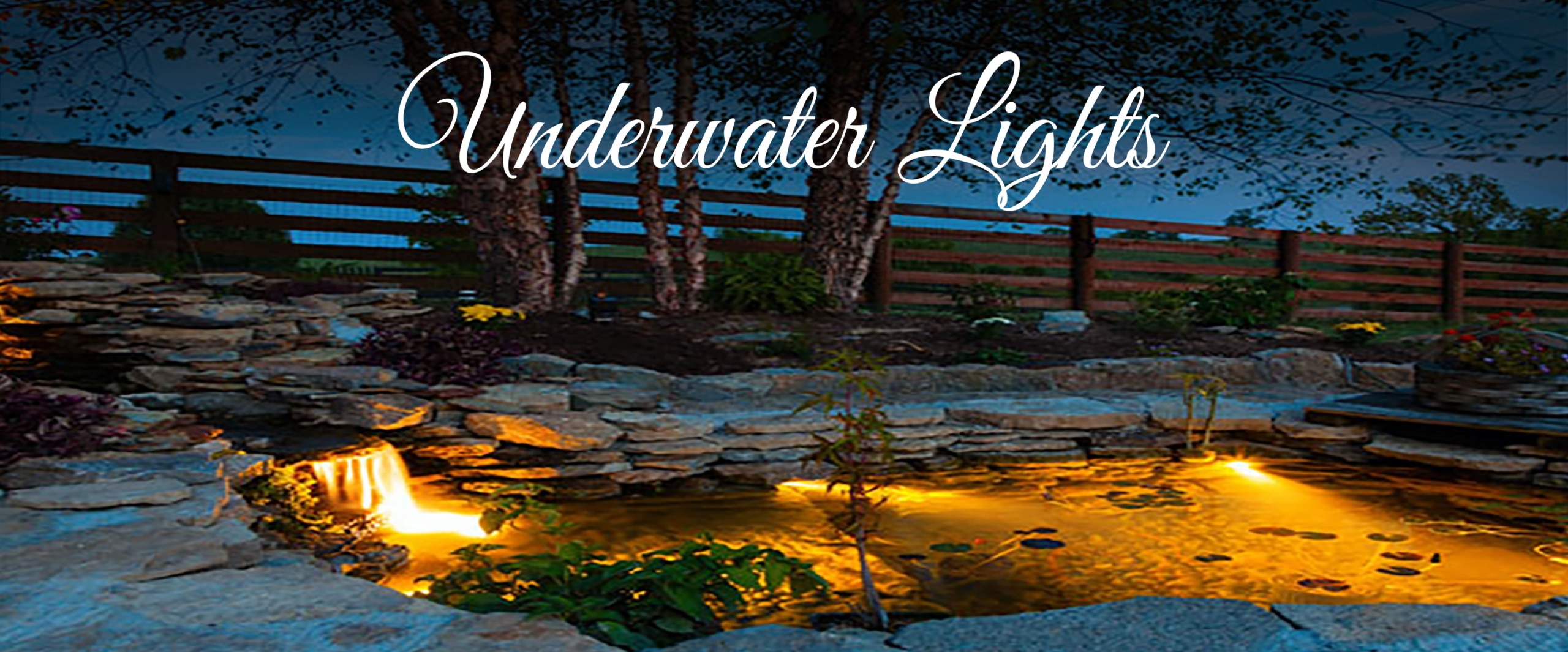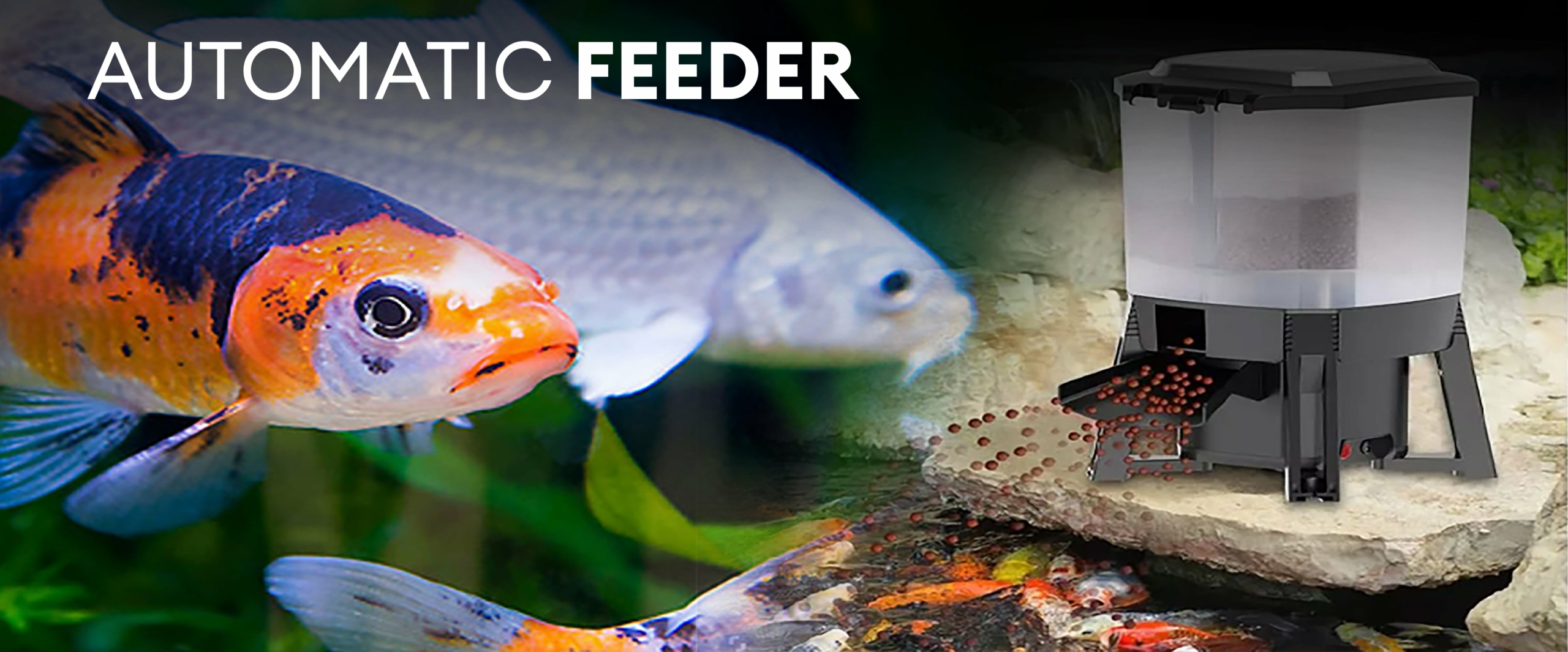(Podcast Episode)
Before Building A Koi Pond Ask Yourself 20 Questions
Building and maintaining a koi pond is a fun and exciting project to make a peaceful and relaxing home for beautiful fish.
However, the success of your water home depends on planning carefully and considering all the scenarios.
Before digging, ask yourself these 20 essential questions to ensure your koi pond is a healthy and happy place for you and your fish.
3 Essential Things To Keep in Mind Before Building A Koi Pond
Three vital things when you design and build it.
- For a koi pond to succeed, it must have clean and clear water for the fish. Seeing the beautiful koi is what makes it so enjoyable. If the pond is clear, you can see its beauty.
- A good pond should keep the koi fish safe. Koi ponds not built well can make it simple for other animals to hurt or even kill your koi fish. A well-made pond for koi fish shouldn’t need a net to keep them safe.
- A good koi pond should be accessible to take care of. Often, people don’t consider maintaining the pond until after it has been built. A poorly made koi pond can be very hard to take care of and can make keeping koi unenjoyable.
Furthermore, an adequately made pond can be very easy and enjoyable to take care of. You can make a big pond with 10,000 gallons of water. It only takes 5 minutes a week to maintain and you don’t have to get dirty.
These twenty questions will help you plan for your new koi pond and design it how you want.
How large should I make my pond?
Many people often need to build their first pond bigger. We recommend a pond that can hold at least 1500 gallons of water. It should be 7 feet wide, 8 feet long, and 4 feet deep.
Some newbies might believe that’s too much, but koi pond owners know that if you make a smaller pond, you won’t be satisfied with it. Koi fish are irresistible, and it’s challenging to be content by having just a few.
Also, remember that if you start with small 6-inch-long koi fish, they could grow 24 inches or longer within 3 or 4 years. Most people later regret not making their first pond larger. Alternatively, you could also make your pond too large. A larger size sometimes means it’s better.
We suggest making a big pond that holds 15,000 gallons of water. It should be about 17 feet wide, 21 feet long, and 6 feet deep. If you make a pond too big, you will have some problems. It takes a lot of work to catch fish in a vast pond.
It can cost a lot of money to treat the pond with medicine if it’s needed. Also, the water in the pond needs to be cleaned every three hours. Running big pumps to do this can cost a few hundred dollars monthly.
If you make the pond too big, you might not be able to see the koi fish easily. So, keeping the pond a reasonable size is better for enjoying watching the koi fish.
Where should I place my pond?
There are many things to think about. Koi ponds need to be in a shady place, not in direct sunlight. The sun is good for algae, but if it’s shady, it won’t grow as fast, and the water won’t get too hot in the summer.
If you want to build in a sunny place, consider building something like an arbor to shade your pond. Unlike a pool, leaves from nearby trees should be okay for the pond if designed well.
In some places, if a pond is more profound than 2 feet, it has to be surrounded by a fence. If you want a pond in your front yard, it could cause some issues. Once you pick the spot for the pond, use a garden hose to outline how big and where the pond will be. It can help you imagine how the pond will look.
After putting the hose where you want to make the pond, step back and look at it from different places and ask yourself. Is the pond going to be the right size? Will I see it from my back deck or kitchen window? Remember, the pond will be the central part of your landscaping.
Once the size of the pond is decided, it becomes easier to predict the water holding capacity of the pond which can be obtained by multiplying the length, width, and depth and then multiplying that number by 7.5.
Can I grow plants in my pond?
Putting plants in your koi pond can make it look nice but also make it more complicated. Here’s why:
If you put shelves in the pond to hold the plants and the shelves are less than 2 feet deep, predators could eat your koi fish. Even if the shelves are more than 2 feet deep underwater, you may still have a problem. If you put a potted plant near a pond and the top of the pot is less than 2 feet from the water, a blue heron might wait for a fish to swim by the pot and then catch it against the plant pot.
Many water plants don’t like water moving, so don’t use jets in the pond. So, many leaves that fall into the pond will sink to the bottom before the skimmer can remove them, so they might need to be taken out by hand.
Sometimes, new plants can have pests on them. Before you put the plants in the pond, it’s a good idea to use potassium permanganate to treat them.
If bugs or germs get into your pond, whole pond should be treated. Many chemicals used to kill koi pond parasites can harm plants. It means you must take out all the plants while cleaning the pond. Also, you must take care of the plants individually before putting them back in the pond.
Adding more salt to the water is an excellent way to eliminate string algae in a koi pond. 4% When plants are in the pond, adding salt is not a good idea. Most plants cannot handle this much salt and will not survive.
Once koi grow to be 12 inches or more extensive, they start eating a lot of plants. During the fall, many pond plants die and the pond’s hygienic ecosystem is disturbed .
Koi fish can hide under the plants in the pond, which could cause some trouble. If a koi fish gets sick and stays away from other fish, you might not see it until it’s too late. Also, catching a koi fish among all the plants can be a challenge.
Some people say you should put plants in the pond because they help eliminate nitrates that can build up in the water. That would be true if there weren’t so much algae that naturally grows in a pond. A good pond usually has a thin layer of green algae on the inside walls. This algae eats nitrates, just like pond plants do. It usually keeps the nitrates at a safe level.
A pond with plants can look nice, but a well-landscaped pond can also be charming and attractive, even if there are no plants.
Which pond is better, a rubber liner or a concrete pond?
A concrete pond lasts longer than a pond with a liner. It can be good if the pond is made well, but it needs to be fixed. The inside edge of the pond can be made with smooth walls that slope down to the bottom drain. This can help to make the floor easier to keep clean. Most experts who build ponds like to use concrete because they can get help from the pool industry to put in the rebar and gunite or shotcrete.
Finding skilled people with lots of experience putting in pond liners takes a lot of work. Usually, it’s easier to put rocks on a concrete pond than a liner pond if you want to use mortar to hold the stones in place.
Concrete ponds are more expensive to build. This extra cost can be balanced out in part when you think about how much a good pond can increase the value of a property. Many bank appraisers feel that a concrete pond is like a concrete swimming pool, and a liner pond is like a portable pool, which is worth less. To eliminate the worries of having high pH levels, let the concrete dry and then cover the pond with rubber paint or epoxy.
A 45-thousand-gallon rubber liner pond is not as long-lasting, but that might be good. If there are problems with the pond’s design or if you need to take out the pond, it’s easier to work with a rubber liner. Many people who build their ponds prefer using a liner instead of concrete.
A pond with a liner is cheaper and keeps a more balanced pH level. The rubber liner makes a soft area for the Koi to swim in, but even when a liner pond is put in correctly, there will still be a few minor wrinkles in the liner.
Once the pond has water, you can hardly see these folds. Placing rocks around the edge of a pond with a liner can be difficult if you don’t want the liner to be visible. The rock work must go into the water, and the mortar won’t stick to the liner.
The issue of making a hole in a liner for the bottom drains, jets, and so on. can be fixed with suitable drains and fittings. If a liner pond is installed correctly, it can stay leak-free for a long time.
In summary, they each have their benefits.
How important is the shape and contour of the pond?
The shape of the pond is fundamental, even though many people don’t realize it. People often make the pond in a creative shape that winds around the land and looks like a puzzle piece. The problem only shows up when the pond is finished with water. You can’t make it stay clean. If the pond still has water in some places, leaves and dirt will gather there and may sink.
Moreover, the shape of the bottom of the pond is also fundamental. Ponds with a flat bottom must be vacuumed regularly to keep them clean. If you no longer work and have two hours daily to clean your pond, you can make it in any shape you want. Alternatively, if you make a pond that cleans itself, focus on the shape and the inside slope leading to the drains at the bottom. We can’t stress enough how crucial the shape of a koi pond is. A carefully planned pond shape and layout can save you a lot of hard work and make a better home for the koi. Check the Advantage Koi Pond Plans for more information about the shape and bottom of the pond.
How deep should I make my pond?
A good koi pond needs to be at least 3 feet deep and have at least 2 feet deep areas. Blue herons and raccoons will come for dinner if the water is less than 2 feet deep.
If you think there are no animals that eat other animals in your area, just make a small pond and observe what happens. Even if there is a way for the fish to get out of the pond quickly, they can still be eaten. Additionally, each side should be straight up and down, not slanting or narrowing. Koi fish won’t be happy in ponds with sloping sides.
You are still unsafe even if you make a deep hiding place with a cave. Blue herons go into the water and wait very still for a long time. They wait for the koi to come out and then catch them. Keep plant shelves out of the pond. We recommend hanging potted plants with wires to support them if you want to put plants in your pond.
If you have problems, you can just take them out. If you don’t listen to this advice, you might have to put a net over your pond or use metal bars to keep animals out, like someone we saw did. You could also lose some of your favorite fish.
Many people think a lovely pond looks less pleasant when it has to be covered to keep the fish safe. A pond with steep sides is an excellent way to protect yourself from predators. Also, koi stay fit by swimming up and down in a pond instead of sideways. The changing water pressure helps koi fish grow the right shape. So, if you want big koi fish, you must make the pond at least 6 feet deep.
How important is the filter?
The filter is essential for your koi pond. The filter helps to keep the water clean and safe for the fish. Many ponds didn’t work because the owners used all their money to make a pretty pond and wanted to spend less on a good filter.
The filter does two jobs.
- It works like a sieve to clean the pond water by removing fish waste and other things that could cloud the water.
- It helps clean the water by changing the fish waste into safer substances.
Some filters need much care and attention, while others are easy to take care of. The Advantage Bead Filter can clean your water and keep your fish healthy. It’s also effortless to take care of. The Advantage Filter is the only filter that comes with a guarantee. If you’re unhappy with it in the first year, you can return it and get your money back. It’s also a pressurized filter. It means you can put it in the water or above or 300 feet away from the pond. It can be helpful when planning your koi pond, and you want to hide the filter system.
It is widely known that choosing a filter is essential. You can always have a filter that’s just the right size. When you pick a filter, it’s a good idea to choose one bigger than you need for your pond. It will be worth the investment.
How far away from my pond can I install my filter system?
It depends on your filter type, but you can place it quite far from the pond.
A box gravity flow system needs water to flow gently into and out of the filter using gravity to move the water in at least one direction. For this to work, the filter has to be put close to the pond and at the right height compared to the water level.
The Advantage Bead Filter is pressurized, not relying on gravity, giving more options for use. This means the filter can be put further away from the pond, so it’s easier to hide. For long distances between 50 and 300 feet, the pipe size going to and from the filter might need to be bigger, up to 3 inches, depending on how big the pond is. By using a pipe of a suitable size, the filter system will work almost as well as if it were right by the pond because it will have less friction and work more smoothly over long distances.
Do I need a pre-filter?
Before reaching your filter, a pre-filter is made to catch things like leaves, fish waste, and string algae. In small ponds, the skimmer baskets can be enough. The bigger the pond, the more stuff gets made, so it’s essential to clean it up. Pre-filters are important when you have a problematic filter, like a gravel filter, because you only have to clean them once or twice a year. The less garbage you put in, the less you have to clean. Pre-filters are less critical when you have a good bead filter because you can easily clean out the waste from the filter when needed.
There are three main kinds of pre-filters:
A primary tank made of concrete or fiberglass with brushes or mats inside to catch debris. A regular tank can be 5 feet wide and 2 to 3 feet deep. Pre-filter brushes or mat material regularly need to be cleaned regularly.
Vortex pre-filters look like large, round tubs that get narrower at the bottom. Water comes in from the side at a diagonal angle, making the water spin in the tub. This makes any dirt or waste move to the outside of the tank and then go to the bottom to be taken out later. Fresh water comes out of a pipe in the middle. Vortex filters need a lot of room, a big hole to go in, and sometimes a sump to drain them.
The Advantage Collector Box is a strong net inside a fiberglass box. The big model has four openings. Each has a slide valve that lets you choose from 4 different places to get the water. The medium model has three entry points. You can use the valves to control the flow from each source and sometimes clean one pipe at a time to prevent debris from building up. It takes up very little space and is the easiest to clean. It is made for big ponds of 6,000 gallons or more where there will be a lot of dirt and waste.
What size pump will I need?
When choosing a pump, your main goal is to move the right amount of water for the least cost. First, you must guess how much water you want to move before choosing a pump. You should run your pond water through the filter every 3 hours on big ponds. It’s easier to clean all the water in smaller ponds because there is less. Divide the amount of water in the pond by how many times you want it to go through the filter. It will tell you the smallest amount of water your pump needs.
Afterward, you should think about how much pressure your system will make. You can do this by considering how intense the water pressure will be in your filter, the jets, the height of the waterfall, and the plumbing when the water flow is at its lowest.
If you want 60 gallons of water to go through your filter in a minute and your system makes a 14-foot pressure at that rate, you need a pump that can handle that amount of water and pressure. When you search for a pump, check the flow chart to find one that can give you 60 to 70 gallons of water per minute at a height of 14 feet. Before buying a pump, check how much water it can pump at different heights. Don’t just rely on the advertisement. The Advantage Plug & Play Filter Systems have been tested at the factory to make it easier to figure out how much water your filter system needs.
Is it necessary for the pump to be quiet? Buy a good pump made for koi ponds. Your pump will run all day and all night. Most pool pumps should not run all day, and if you put one on a koi pond, it could cancel your warranty. A lousy pool pump can make your electricity bill go up by $100. 00 each.
What size pipe should I use?
The size of the pipe is significant for koi ponds. Pool builders usually use smaller pipes to build a pool because they cost less and are easier to handle. They can fix the problem with the small pipe by using big, powerful pool pumps. It is okay because they usually only use these pumps for 4 to 6 hours daily. Koi ponds must constantly circulate a lot of water all day and night. When you use a smaller pipe, it needs more force to push water through it.
Pumps are measured by how fast they can move water at a specific pressure. One foot of head pressure is the force needed to push water up 1 foot. To push 20 gallons of water per minute through 50 feet of 1-inch pipe, you need to apply 11. 4 feet of pressure. If you made your pipe bigger from 1 to 2 inches, the pressure would decrease to 0. The less pressure you have in your head, the smaller and more efficient pump you can use. This can help you keep more money in your pocket for a long time.
How important is it to have a bottom drain?
Another common mistake that is almost impossible to correct after the pond is built is the failure to install a bottom drain. Bottom drains are a necessity for a successful koi pond. To maintain proper water quality, you must get the fish waste into the filter to remove it from the system.
Without a bottom drain, the best filter in the world cannot do its job correctly. Some ponds may require several bottom drains. That shows how important they are to a successful pond. Some manufacturers believe that a bottom drain is optional.
Simply placing rocks on the bottom of the pond and allowing beneficial bacteria to grow in the rocks will duplicate what you find in nature, and everything will be fine. The problem with that reasoning is that you often have a constant supply of fresh water entering the river or lake, and the fish population is usually about one fish per 30,000 gallons.
Meanwhile, in a koi pond, water can be recycled, and the fish population averages about one fish per 150 gallons. Unless there is one koi in the pond and change the water constantly, nature cannot be duplicated. What works in nature will not work in a koi pond.
Another potential problem is when leaves collect and decay amongst the rocks, they produce tannin acid, which, though it doesn’t bother the fish, will turn the water a brown, dirty-looking root beer color. The only way to get clear water again is to drain the pond and power wash the rotting leaves between the rocks. This is a significant job which, at best, provides only a temporary fix until the leaves again collect in the stones.
Additionally, this whole cleaning process is highly stressful for any koi in the pond because they must be netted up and stored while it is cleaned. The fish will then be placed back into a pond that has experienced a 100% water change, and the whole ecological balance of the pond has been changed.
This experience can be avoided by simply leaving out the rocks, installing a bottom drain, and contouring the bottom. That way, any fish waste or leaves on the bottom of the pond will work their way to the drain and be removed.
How important is it to have a skimmer?
A skimmer can significantly affect how much you like your pond. A skimmer that works well will gather leaves and other things that fall on the pond’s surface into a net or basket so you can throw them away quickly. If you don’t have a skimmer, you must keep cleaning leaves and dirt from your pond.
They are great because they only cost a little to add to your pond. Even if your pond is inside, you should still use a skimmer to clean the water. Skimmers remove leaves and other stuff from the water. When things like leaves and plants break down in a pond, it makes a sickening film and bubbles. A skimmer takes off the film atop the pond by skimming it away.
How important is it to have jets?
Beginners often need to remember to include jets when building a pond. If you have ever had jets adequately put in your pond, you would only want to make a pond with them. The jets have many significant advantages. They give the fish a workout because they enjoy swimming in the river.
By putting the right kind of jets in a pond in the right place and depth, you can make the skimmer work better by gathering the leaves. Also, when the water from the jets hits the pond, it takes in a lot of oxygen, increasing the overall oxygen level.
How important is it to have an auto-fill?
An auto-fill feature is something you’ll like if you have it. It helps to keep a pond clean and tidy. An auto-fill does precisely what the name says it does. It will ensure the pond water stays at the same level all the time without needing to do it manually. More water will come back down when water goes up into the sky. They are accommodating when you have a bead filter because they will add water back after cleaning it.
People often forget to turn off the hose after adding water, and later, their koi fish end up dead. When you change more than 10% of your pond water with city water, you must use a dechlorinate to remove the chlorine because it can harm the fish. With an auto-fill, you will remember to turn off the water. You don’t usually need to add dechlorinator to the pond every time the auto-fill turns on. You are replacing only a little water, so the chlorine evaporates before it can cause any issues.
The advantage is that auto-fill has a feature that prevents it from overflowing. It is essential for two reasons.
- When the pond gets too full, like when it rains, the extra water flows through the auto-fill instead of spilling over the pond’s edge. Sometimes, when a pond gets too full, the fish might leap out of the water.
- The second reason is that if the valve that fills the pond with water gets stuck and stays open, the extra water will flow out of the pond instead of returning when the pond is full. It could help protect your koi fish from getting too much chlorine.
Do I need to install an ultraviolet light?
New ponds can get a lot of algae until the ecosystem in the pond is fully grown, which can take a few years. Ultraviolet lights are made to get rid of algae in the water. Algae can make a clear pond look like green pea soup very quickly. Ultraviolet lights work by shining a very bright light on the algae in the water when it passes through the unit. The light energy kills the algae’s DNA, which makes the algae die.
When the green growth cells kick the bucket, they will clump together so they can be effectively expelled from the water through sifting. Choosing the right size light is significant. If the light needs to be more vital for the pond, you will see little difference. Also, if the water goes too fast through the light, it won’t work well. UV lights can’t eliminate string algae because they stick to the pond and don’t pass through the light.
Should I install underwater lights in my pond?
Lights put underwater in a pond make it possible to enjoy the pond even when it’s dark outside. At night, the pond looks very different because of the lights in it. At night, the koi fish are easier to see in the pond because no sunlight shines. The only thing people wish for about pond lights is that they had put more lights when they made the pond.
We suggest putting lots of lights in a pond, depending on its size. Usually, people put lights in a koi pond to make the koi fish visible, not just the water. When you put only one light in a pond, you usually just have one area of light, and the rest of the pond is still dark. The pond lights up from different angles, making the koi fish more visible.
Should I install an automatic feeder on my koi pond?
Automatic feeders are helpful in certain situations. If you have a big pond and want your koi fish to increase, you should set up a feeder and give them high-protein food five times a day in the summer. Alternatively, if you only want something to help you avoid the task of feeding your koi every day, we suggest you save your money and make time to do it yourself, even if it’s just once a day. Giving your koi fish food will teach you how they react to it.
It is important. You know something is incorrect when you feed fish for the first time and see them acting differently. It could be because your water is not balanced or because of parasites. You can deal with it before it becomes a big issue. When you go on vacation, just ask your neighbor to come over once a day and feed the fish in the pond. Most people who live near each other would eagerly accept the opportunity. When your neighbor feeds your fish instead of a machine while you’re away, the benefit is that if something goes wrong, they can ask for help.
How many koi can I put in my pond?
It is a great question, but it’s hard to answer. Each pond can only hold a certain number of koi fish. The issue is that the number keeps going up and down. A big pond that can hold 1500 gallons of water can hold 30 koi fish that are 6 inches long. Two years later, the 30 koi fish are now 18 inches long. It is a problem because there are too many fish in the pond. People often put too many fish in their ponds, so the Advantage Koi Pond System Kits have extra large filters to handle this.
It means you can have a lot of koi in your pond because the filtering system won’t stop you from adding more. Instead, the koi will be limited by how many can fit in the pond. Even if the water is spotless, when the koi fish are too close together, their immune system slows down, and they start getting sick. The easiest way to see if there are too many koi in a pond with the Advantage System is to check if they look overcrowded. If they can’t swim calmly, it’s time to take some out, even if the water is clean.
What should I look for when selecting someone to build my koi pond?
Don’t think your landscaper or contractor can build a koi pond well. It could be a big and expensive mistake. You have to finish your homework and think carefully about how you want your koi pond to look. Look at the previous questions and write down what you feel is essential and what you don’t. What size should the pond be? Do you want it to be easy to take care of? How much money do you want to spend on it? Make sure you know what kind of pond you want. Talk to them about their skills and experience when choosing someone to build your pond. If you can find someone good at building koi ponds, that would be useful. It could be helpful because people who only make koi ponds might not be open to new ideas.
Today’s new technology allows you to make a pond with better water quality and is easier to care for than the ponds made eight years ago. If you and your builder have differing views on how you want your pond built, it could be a big problem.
You can turn your outdoor area into a beautiful oasis with Midwest Pond Features and Landscape. We can make your ideas come to life.
Improve your environment, and enjoy a beautiful custom pond. Are you ready for a change? Get in touch with us today and start the transformation.
Wrapping it Up
Creating a koi pond is an exciting project combining artistic design and careful planning. Every question asked helps make a lovely home for your koi fish. By carefully thinking about things like the size of the pond and what to use to filter the water, you can create a place where plants and animals can survive and grow well.
As you start this water adventure, remember that a well-made koi pond is not just a decoration. It’s a living work of art that changes as time goes on. By asking good questions and making intelligent choices, you’re not just building a pond but creating a peaceful place where your koi can thrive.
If you want to create a beautiful backyard or make your garden more peaceful, use the 20 questions as a guide. With Midwest Pond Features and Landscape, your dream pond will become a reality. Explore the beautiful water features and enjoy their enchanting beauty. Have a great time at the pond.
